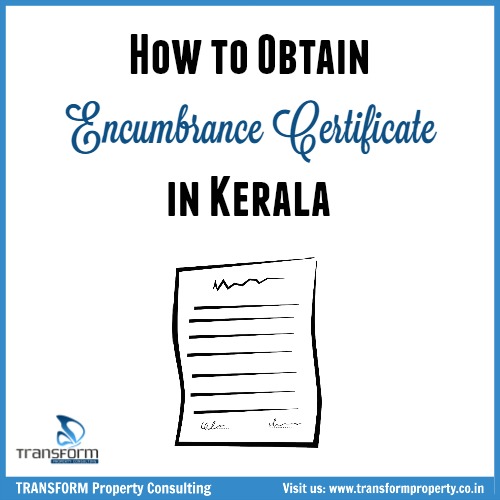
The term “encumbrance” refers to the legal liability on a piece of property that lowers its value. It is usually used with respect to property that is kept as security by the owner, but the dues have not been fulfilled. The document that lists out all the encumbrances on a particular property over a specific time duration is called the encumbrance certificate.
The encumbrance certificate is a very important legal document that has to be obtained before any property purchase. It lists out all the financial and legal transactions that have been made with respect to the property for a specified time period.
Related Reading: What is an Encumbrance Certificate?
The encumbrance certificate is evidence that the property on sale is free from mortgages, and there are no legal disputes revolving around it. It permits the property to be sold as a free title and the buyer gets the ownership without any pending dues attached to it.
The encumbrance certificate is vital for the purchase of any property, and for taking out a loan against the property. Most banks and government offices require at least 13 years of encumbrance, but you can get even more listed on the encumbrance certificate.
The encumbrance certificate for a property can be obtained from the relevant sub registrar’s office where the deed was originally recorded. Here’s the process to be followed to obtain an encumbrance certificate.
How to Obtain Encumbrance Certificate in Kerala
Unlike the earlier days when one had to visit the Sub Registrar’s Office with an application form, EC can be obtained online through the website of Kerala Registration department. www.keralaregistration.gov.in
Here is a step by step guide on how to obtain Encumbrance certificate in Kerala.
Step 1: Get the Property Details
Find out the survey number of the property, and the owners’s name. This is the basic information that is required in order to apply for the encumbrance certificate.
Step 2: Apply for the encumbrance certificate (EC)
The EC application needs to be filled out with mandatory details such as:
- District and SRO where the property is located
- Details of the applicant
- Property description (including location, measurements and boundaries)
- Period for which the EC is requested
- Preferred language in which the EC need to be issued.
- Mode of payment (Payments can be made online, as Money Order or as Cash)
The applicant will also have to furnish additional details such as their complete residential address and also mention the purpose for which the EC is required.
The filled in application form can then be submitted.
Step 3: Pay the required fees
The fee structure for an EC is as follows.
- Application Fee – Rs.10/-
- Search fee for the First Five Years – Rs.100/-
- Search fee for the Period Exceeding 5 Years but not Exceeding 30 years – Rs 250/-
- For Every Additional Year Exceeding 30 Years – Rs 25/-per year
- Separate fee has to be remitted for each owner
- For priority applications, an additional fee of Rs 100/- will be charged.
The fees will be charged year-wise, with even a fraction of the year being considered as a full year. For the purpose of encumbrance certificate, the year starts on April 1st and ends on March 31st .
As mentioned in step #2, fees can be paid online, as Money order or as cash. In order to make cash payments, submit the printed application form alongwith the acknowledgement form at the SRO with the cash payment.
Step 4: Issuance of the encumbrance certificate
Once application is submitted after remitting prescribed fees, the SRO will process the EC and issue the certificate. This may usually take approximately 6 to 20 days in practice. However depending on the SRO and the search period issuance of an EC may take upto even 40 days.
Step 5: Check the status of the application and download the Encumbrance Certificate
Once the application for an EC is made, its status can be checked online. When the certificate is ready, you can download it directly from the website.
Make sure that the EC has been signed and stamped with the official seal. The survey number and other details pertaining to the property also have to be cross-verified with what was mentioned in the application.
Limitations of the Encumbrance Certificate
The encumbrance certificate does have some limitations, though. It cannot be considered as the only evidence to verify the encumbrances of a property.
Certain transactions regarding immovable properties, other minor transactions are not captured in the encumbrance certificate because they are not required to be registered under the Registration Act, 1908.
Details of equitable mortgage, where a mortgage is taken by depositing the original title deeds of the property with a bank, are not registered at the registrar’s office. It will therefore not reflect in the encumbrance certificate. The same is the case for testamentary documents or leases for a period lesser than a year.
Other transactions like tax liabilities, oral tenancy, family arrangements, prior unregistered agreements, unregistered wills, and other miscellaneous agreements do not need to be registered. Therefore these details will not be present in the encumbrance certificate.
The encumbrance certificate certainly cannot be neglected during a real estate deal, but it’s best to not rely on that alone. We hope this article has clearly outlined the steps you need to follow to obtain an encumbrance certificate in Kerala.
Simply presented
The information given is very clear and in a simple way.